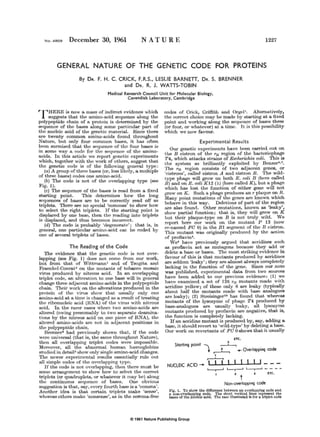This document summarizes genetic experiments that provide evidence for the nature of the genetic code. The key findings are:
1) The genetic code is read from a fixed starting point in triplets (groups of three bases), not in an overlapping manner. Mutations usually only change one amino acid rather than three.
2) Revertants of a mutant called FO0 usually form double mutants rather than simply reversing the original mutation. These suppressor mutations map to the same region of the B cistron gene.
3) Over 80 mutants were found that behave similarly - they are all non-leaky mutants that map to a limited region of the B cistron gene. The authors propose this provides evidence that





